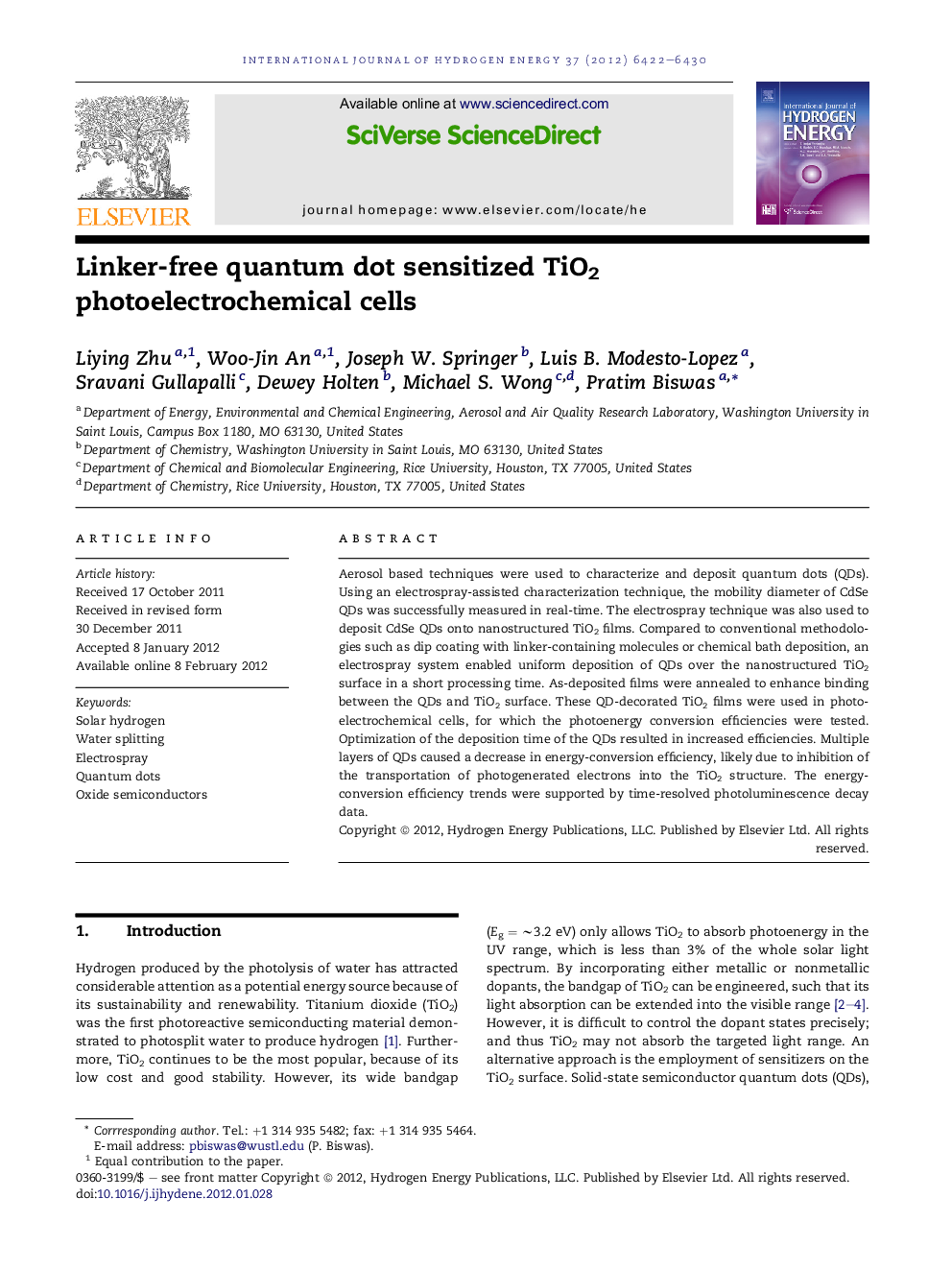| Article ID | Journal | Published Year | Pages | File Type |
|---|---|---|---|---|
| 1276583 | International Journal of Hydrogen Energy | 2012 | 9 Pages |
Aerosol based techniques were used to characterize and deposit quantum dots (QDs). Using an electrospray-assisted characterization technique, the mobility diameter of CdSe QDs was successfully measured in real-time. The electrospray technique was also used to deposit CdSe QDs onto nanostructured TiO2 films. Compared to conventional methodologies such as dip coating with linker-containing molecules or chemical bath deposition, an electrospray system enabled uniform deposition of QDs over the nanostructured TiO2 surface in a short processing time. As-deposited films were annealed to enhance binding between the QDs and TiO2 surface. These QD-decorated TiO2 films were used in photoelectrochemical cells, for which the photoenergy conversion efficiencies were tested. Optimization of the deposition time of the QDs resulted in increased efficiencies. Multiple layers of QDs caused a decrease in energy-conversion efficiency, likely due to inhibition of the transportation of photogenerated electrons into the TiO2 structure. The energy-conversion efficiency trends were supported by time-resolved photoluminescence decay data.
Graphical abstractFigure optionsDownload full-size imageDownload as PowerPoint slideHighlights► Size characterization of CdSe quantum dots using electrospray and aerosol routes. ► Linker-free quantum dot sensitized TiO2 photoelectrodes by electrospray deposition. ► Enhanced properties with QD deposition on ACVD processed columnar TiO2 films. ► Electron injection behavior from quantum dots to TiO2 influences photocurrents.
